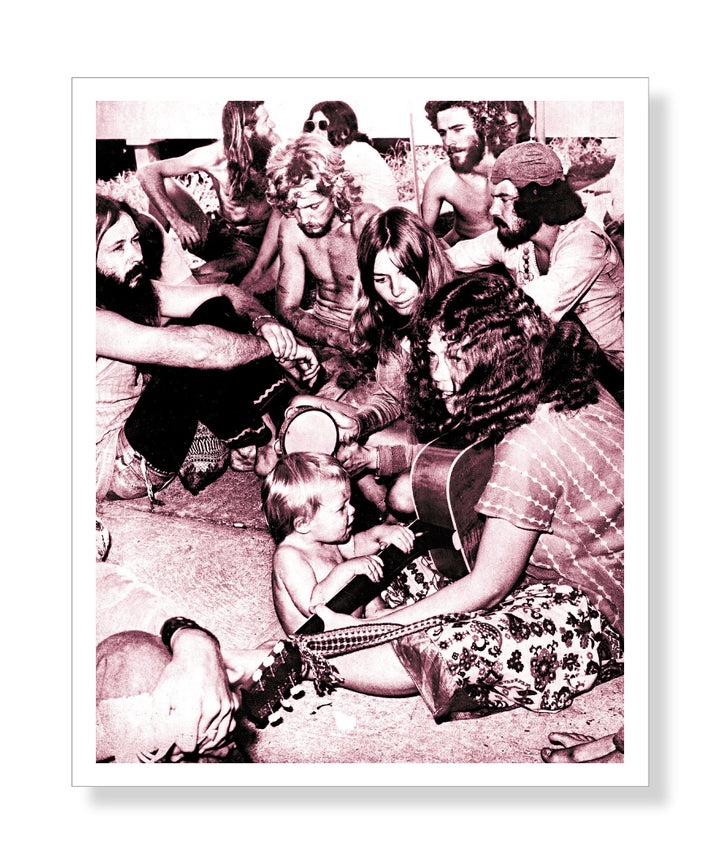
Forget Leisure Village. As the housing needs of boomers shift, watch for a return of a popular living arrangement from the 1960s -- the venerable commune, where like-minded souls shared chores and expenses, found companionship and took care of one another -- at least in theory. Author and aging sociologist Bella DePaulo notes in her new book, How We Live Now: Redefining Home and Family in the 21 Century, that communes are already making a comeback.
In fact, living with people with whom you are not related is five times as likely to happen now as it was in the 1950s, according to U.S. Census Bureau data. What's more, DePaulo said, contemporary home-splitters are sharing a place with other people not because that's what they're stuck with, and not even (just) because it's what they can afford. "Today, boomers who share a place with others do so because they want to," she said.
Companionship is one big reason why. They are not just sharing a house, they are sharing a life ala the "Golden Girls," only they are not all "girls." Men are doing it, too, and even some couples are getting in on the trend of living with friends. Sometimes it starts small with the joint ownership of a vacation home. But once the waters have been tested and no one drowns, it can lead to a comfortable co-housing arrangement.
Boomers are getting creative when it comes to retirement housing arrangements, DePaulo said. They watched their own parents end up in institutions and have vowed to avoid the same fate. Some are coming up with their own ad hoc solutions, such as finding a duplex to share with a friend, so each person has a home of her own as well as a close friend just a few feet away. But others are taking it one step farther: They are moving in together with friends, renting out rooms to friends, creating their own senior co-housing communities, or staying in their own homes and becoming part of the national "Village to Village" movement, said DePaulo. The Village to Village movement is a peer-to-peer grassroots network run by volunteers and paid staff to coordinate services such as transportation, home repairs, shopping trips, and social opportunities among seniors who live independently in their own homes. Currently there are more than 15o Villages operating across the country, as well as Villages in Australia and the Netherlands. Another 120 are in development.
And while nobody is really envisioning the modern commune to be a live-off-the-land or smoke-weed-all-day sort of place, the social contract of helping one another and companionship is a common thread. AARP always cautions to be mindful of the three C's of aging: companionship, caregiving and costs. And in the case of living on a commune, it's a Trifecta win.
Another living arrangement that is enjoying a resurrection is the multi-generational household. The children of boomers may have returned home for financial reasons – the economy, the job market, the housing market, and college debt -- but a recent Pew report found that even now that the recent recession is over, they aren't moving out. From the Pew report: “…the nation’s 18- to 34-year-olds are less likely to be living independently of their families and establishing their own households today than in the depths of the Great Recession…”
The reason is simple, said DePaulo: "Boomer parents and their grown kids actually like each other," she said. They are emotionally closer and more connected than boomers were with their parents when they were young adults.
Plus, because of our longer lifespans, we're likely to have multiple generations under the same roof. A 20-year-old living in 2000 was more likely to have a living grandmother than a 20-year-old in 1900 was to have a living mother, according to the book "Family Life in 20th Century America" by Marilyn Coleman.
Also making the case for co-habitation commune or family-style living: A report from the Council on Contemporary Families found, "One hundred years ago, 70 percent of American widows and widowers moved in with their families. Today, nearly the same proportion of widows and widowers live alone." And not all may want to. Adding to those singles numbers are divorcees. While divorce is leveling off or decreasing in other age brackets, for people over 65 it is actually still increasing. They are not eager to remarry, either -- especially the women. Women still outlive men, so many women, even if they got married and stayed married, end up spending years or even decades single after they are widowed.
And as for those who wouldn't mind going back in time to the communes of old, well, there are still some around. The Farm -- founded in 1971 with a membership peak of more than 1,200 members in 1983 -- is a commune that now supports about 150 residents on its 1,750-acre farm in Tennessee. It is 30 miles from the nearest hospital, 50 miles from the nearest interstate highway, and 75 miles from the nearest major city. It is also 35 miles from the birthplace of the Ku Klux Klan.
Also on Huff/Post:

